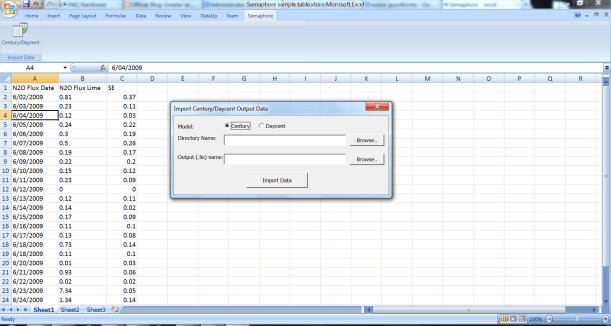There are some major considerations in developing the Semaphore software, including the degree to which automation may be achieved for ecological modelling tools and if possible how to run this software on the cloud. A number of ideas have been posited on these issues since project commencement.
At the most recent meeting, discussion surrounded the following proposal for an outcome of the Semaphore project. It includes the possibility that where some processes may be automated, some will only be semi- automated or remain wholly manual processes.
Part one is about helping the user prepare the data to be modeled: including calibrating the model, running the modelling software, displaying results for visual inspection, and uploading the data and parameters to a repository. For the procedures that can be fully automated, there will be a button on the excel add-on. For the semi-automated processes relevant buttons will be supplemented by instructional pop-up windows explaining to the user their next steps. Similar pop-ups will explain the fully manual steps of the data analysis process.
The second part of the proposal concerns a data sharing portal where browse-able sets of analyses from the models are uploaded by users. Data packages can be downloaded and simulations run on a cloud version of the Century/Daycent models. Alternatively a Kepler workflow can be downloaded that can be used to automatically run a simulation from the user’s desktop. The workflow will be basic and consist of taking formatted data and optional parameters from the repository, running it on a cloud based modelling tool, and displaying the output.

Ideas also expand beyond the probable scope of the Semaphore project to the possibility of the user being able to edit workflow to suit their needs, for example to use a different modelling tool or further manipulate data.
These discussions help to provide context for the technical work being carried out, providing a direction in which to work. Technical details to follow…




